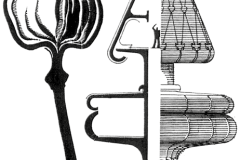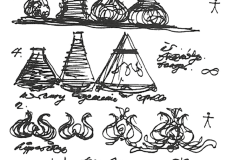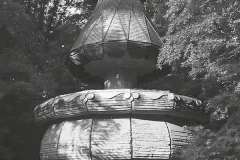György Csete’s Fountain House in Orfű
Text: Bettina Bali
Photos: Csete Foundation
The Fountain House („Forrásház”) was built between 1970 and 1974 based on the plans by György Csete, with the help of Jenő Dulánszky, a structural engineer. One of its most striking features is the combination of a variety of functions. The underground level of the structure, which used to supply water to Komló, houses a pumping system, a transformer station on the first level and a rest room for cavers on the second level. The primary function is, of course, industrial. The rest room is only an accessory, but the rest room may have been elevated to the status of an equal to the transformer house as one of the two prominent parts of the building visible from the outside. The primary function of the Fountain House itself became symbolic, as a a structure that allowed the use of karst water, it is impossible not to associate it with the idea of the „clean spring” of Bartók which is represented by the citydwellers of Pécs.
This world view evokes an ancient state and condition when the natural and artificial, man-made environment were not yet separated, when buildings and edifices formed an integral part of nature. It is precisely this unity that the Fountain House has achieved by creating a live link with its environment through its primary function, and with people through the transmission of water. Its volumes also reinforce the building’s connection with the natural world. Its bud-like mass and petal-like receding rim have an organic effect at first glance, but there are also more precise analogies. In addition to formal inspirations from the natural world, the design of the Fountain House is also influenced by vernacular architecture and ornamental art. However, the forms of the building are not only influenced by parallels and analogues with nature and vernacular culture, as it is also linked to one of the most important scientific achievements of the time, space travel, which was (and still is) a major preoccupation of Csete. The idea of space-travel was for Csete’s generation the opening of the world; the architect was amazed not only by the technical progress, but also by the fact that humans could take a step closer to the unknown. In György Csete’s work, cosmic horizons are thus linked to the existential questions of the period, and are inextricably associated with them.



